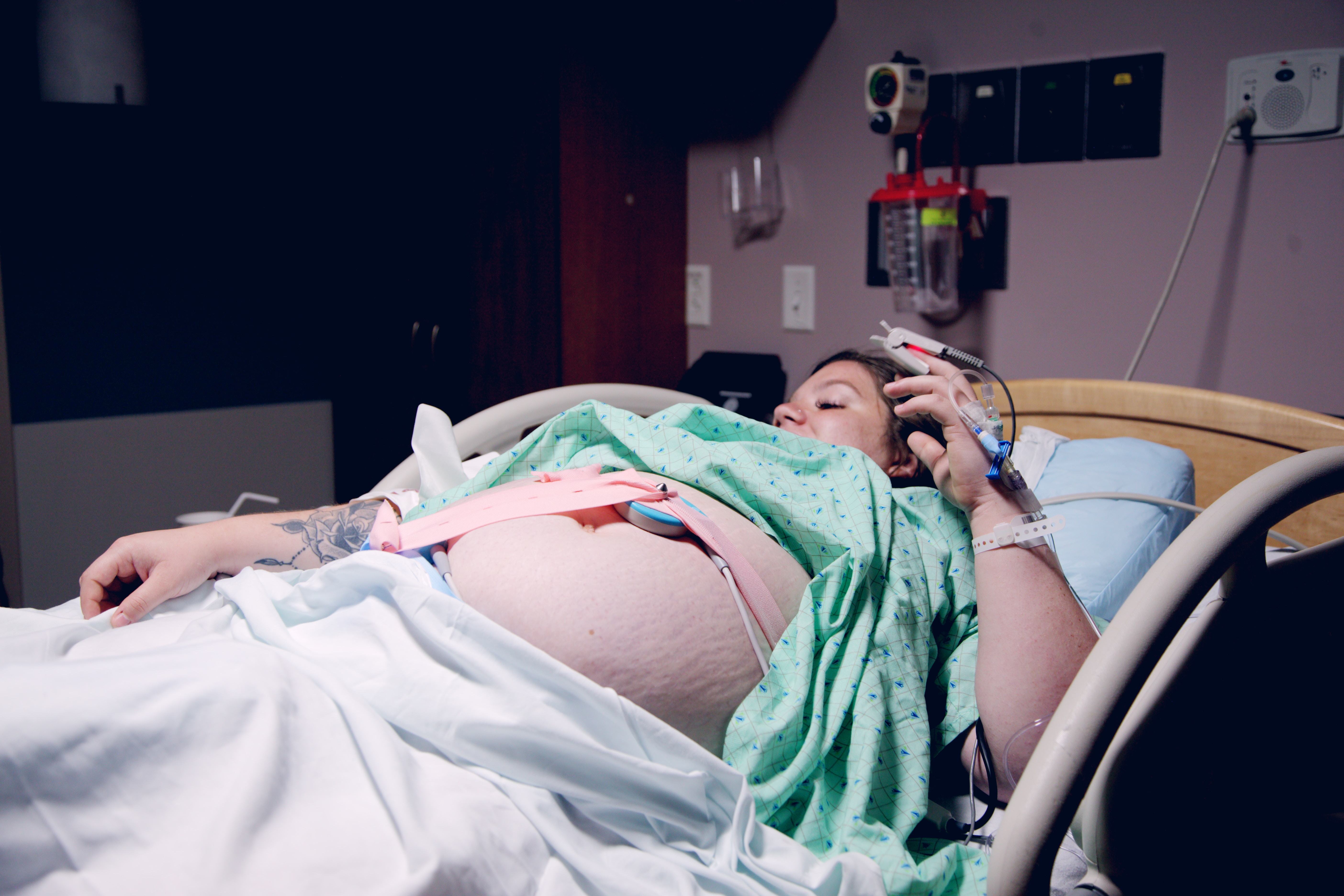Labor & Delivery Interventions

Having a birth plan is a great way to prepare for the birth of your new baby and minimize your risk of interventions during labor and delivery. While it is important to communicate your plan with your birthing team, it is possible that your plans may need to change. The most common changes to someone’s birth plan are due to unexpected interventions. Interventions can be scary, but being informed about medically necessary interventions and ways to help prevent them is the best way to make the best decisions for yourself and your baby!
Monitoring
During labor your baby may be monitored periodically or continuously. Monitoring can be done externally on your belly or internally through a probe attached to your baby’s head. Monitors are typically used to measure your baby’s heart rate or your contractions. In most cases, you will have to remain in bed during monitoring, but it is important to talk with your birth team about how often your baby will need to be monitored.
Induction
This can occur if you have gone several days past your due date, your cervix isn’t dilating, or if it is necessary for your baby to come out due to health risks. This can occur using multiple different methods and is done to jumpstart labor and help your body progress to prepare for birth.
- Cervical Softening/dilation induction
- Different medications have a variety of delivery methods, including one inserted like a tampon, another through a syringe, or a pill taken by mouth or placed into the cervix.
- Balloon catheter which is a small balloon that is inserted into the cervix and inflated. The catheter will fall out on its own as your cervix dilates.
- Membrane sweep is done by an OB GYN or midwife. They will insert their fingers into the cervix and gently separate the membranes attaching the amniotic sac to the cervix.
- Contraction induction
- Pitocin is used to induce labor and medication is slowly given through your IV. Pitocin mimics the hormone Oxytocin, which stimulates your body to increase contractions.
- Breaking your water is an effective tool for increasing contractions. A healthcare professional will use a small hook to pop the water bag. This helps your baby to move down and help you dilate. It also stimulates contractions to become stronger so that labor can progress.
- Nipple stimulation is a natural way to stimulate contractions. It involves yourself or your partner manually stimulating your nipples or using a breast pump. Nipple stimulation releases oxytocin and tells your body to jumpstart contractions.
Delivery
- An Episiotomy is a cut made by your doctor to the opening of the vagina and can be done with local anesthesia. In some cases this is done to prevent major tearing during delivery due to a larger baby. While it is not always recommended, episiotomies can prevent additional interventions.
- Vacuum and Forceps are instruments that are placed on the baby’s head to help pull them out as you push. This can help with delivery, but it is generally only used as the last resort due to the risk of injury to you or your baby.
- Cesarean Section (c-section) is a surgery performed to deliver your baby. This involves an incision in your lower abdomen and uterus from which the baby is taken out. In some cases c-sections are planned, while in others they may be done when labor is not progressing or when medically necessary for you or your baby.
Many interventions, while commonly used, may have side effects and long term risks, so make sure that you communicate your wishes with your medical team. Knowing the risks and knowing your options is the best way to be empowered during your birth experience. If you are unsure about any of your options, ask questions! No question is a bad one when it comes to the health of you and your baby. Remember, it is your body and you have the right to decide!
